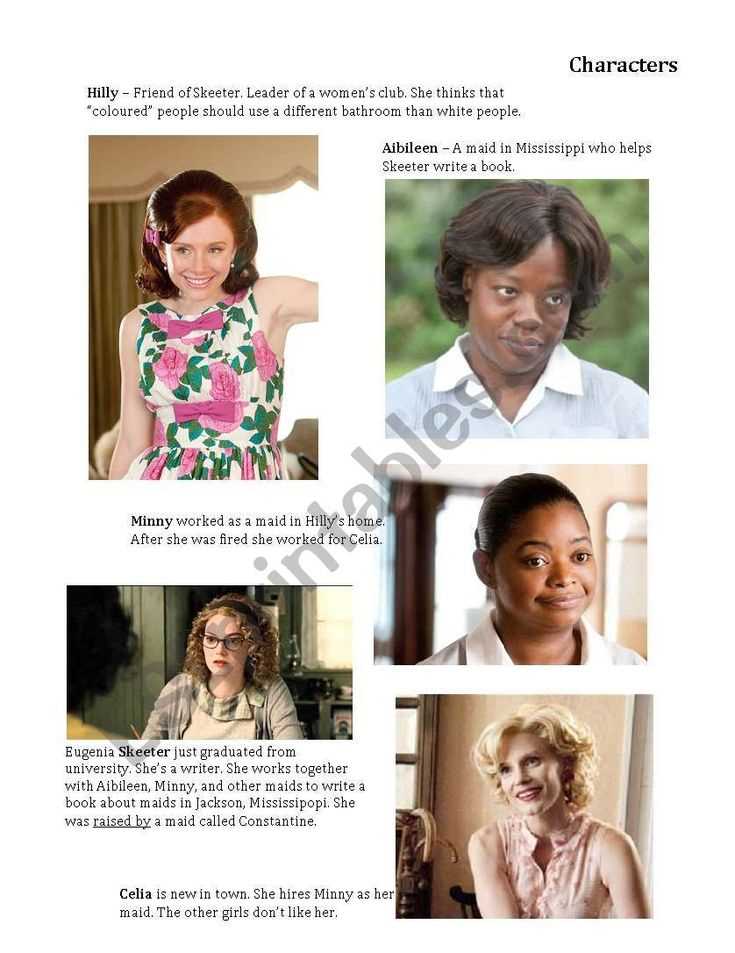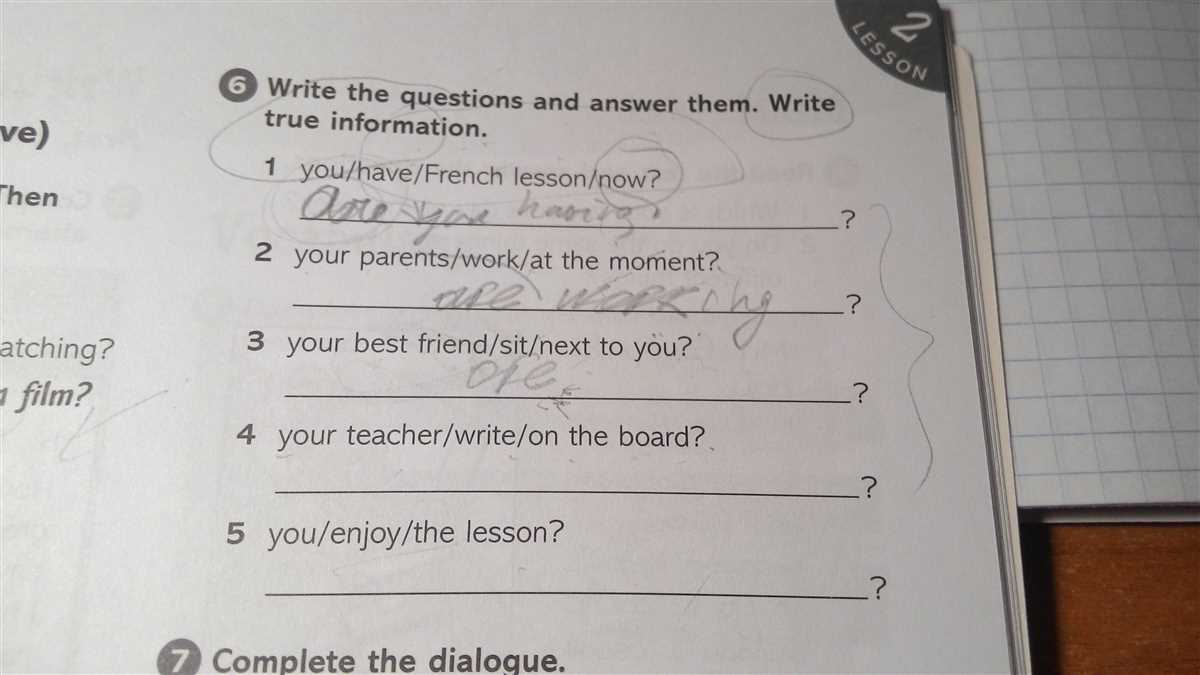
Released in 2011, “The Help” is a heartwarming and thought-provoking drama that delves into the racial tensions and social inequalities prevalent in 1960s Mississippi. The film, directed by Tate Taylor, is based on the bestselling novel of the same name by Kathryn Stockett. It tells the story of African-American maids working in white households and the brave individuals who risk everything to expose the injustices they face.
“The Help” raises several important questions that challenge viewers to examine their own beliefs and prejudices. One of the central questions of the movie is: How far would you go to fight for justice and equality? Through the characters of Skeeter, Aibileen, and Minny, the audience is confronted with the moral dilemma of whether to conform to societal norms or to stand up for what is right.
The film also explores the themes of racism and discrimination, raising questions about the existence of institutionalized racism and the role of individuals in perpetuating it. It challenges viewers to consider their own biases and prejudices, and to reflect on how they contribute to a system of inequality.
The Help Movie Questions and Answers
The Help movie is a thought-provoking and emotionally powerful film that delves into the complex dynamics of race, gender, and class during the Civil Rights Movement in the 1960s. It tells the story of Skeeter, a young white woman, who decides to write a book about the experiences of black maids in Jackson, Mississippi.
1. What is the main theme of The Help?
The main theme of The Help is the struggle for racial equality and the power dynamics between black maids and their white employers. The film explores the inherent injustice and discrimination that the black maids face on a daily basis, as well as the bravery and resilience they demonstrate in navigating this oppressive system. It also highlights the role of individuals, like Skeeter, who challenge the status quo and strive for social change.
2. How does the movie address gender roles?
The Help not only focuses on racial issues but also addresses gender roles and expectations during the 1960s. It highlights how women, both black and white, were confined to certain roles within society and how they were expected to conform to the expectations of their families and communities. The film challenges these gender norms by depicting the women characters as strong, resilient, and capable of achieving more than society dictated. The main female characters, Skeeter, Aibileen, and Minny, each defy societal expectations in their own unique ways.
3. What are some significant moments in the film?
The Help is filled with significant and impactful moments that leave a lasting impression on the audience. One of the most powerful moments is when Aibileen, played by Viola Davis, shares her experiences and emotions about raising white children, highlighting the complexity of her relationship with Mae Mobley. Another significant moment is when Minny, played by Octavia Spencer, takes a stand against her abusive employer, Hilly, by baking her a “special” pie.
- 4. How does The Help portray the white southern community in the film?
The film portrays the white southern community in a way that exposes both the overt and subtle forms of racism and prejudice that existed during that time. It shows how racism was deeply ingrained in their daily lives and how it was considered normal and acceptable. The characters of Hilly and Elizabeth represent the more overt racism, while Skeeter represents the white individuals who were willing to challenge these beliefs and work towards change.
| Movie Questions | Answers |
|---|---|
| 1. What is the main theme of The Help? | The main theme of The Help is the struggle for racial equality and the power dynamics between black maids and their white employers. |
| 2. How does the movie address gender roles? | The Help addresses gender roles by challenging societal expectations and showcasing the strength and resilience of its female characters. |
| 3. What are some significant moments in the film? | Significant moments include Aibileen sharing her experiences and Minny taking a stand against her abusive employer. |
| 4. How does The Help portray the white southern community? | The film portrays the white southern community as deeply ingrained with racism and prejudice, but also highlights those who work towards change. |
Main Characters in The Help

“The Help” is a powerful and captivating movie that explores racial tensions and inequalities in 1960s Mississippi. The film revolves around three main characters who form an unlikely bond and challenge the status quo in their community. These characters are:
- Skeeter Phelan: Skeeter, played by Emma Stone, is a young white woman who returns home to Jackson, Mississippi, after graduating from college. Skeeter aspires to be a writer and challenges the traditional roles and expectations placed on women in her society. As she interviews black maids, she begins to understand the struggles they face and becomes an advocate for their stories and rights.
- Aibileen Clark: Viola Davis portrays Aibileen, a wise and resilient black maid who has spent her life working for white families. Aibileen is hesitant to speak out, but as she shares her experiences with Skeeter, she begins to find her voice and becomes a central figure in the creation of a controversial book that highlights the mistreatment of black maids.
- Minny Jackson: Octavia Spencer portrays Minny, a sassy and courageous black maid who has a reputation for speaking her mind. Minny is fired from multiple jobs due to her outspoken nature, but she finds solace in sharing her story with Skeeter. Her experiences shed light on the abusive behavior and humiliation faced by maids in white households.
Together, these three dynamic women navigate the challenges of racism, discrimination, and societal expectations, ultimately inspiring change and challenging the status quo in their community.
What is the setting of the movie “The Help”?
The setting of the movie “The Help” is Jackson, Mississippi, during the early 1960s. The film takes place in the midst of the Civil Rights Movement, a time of significant racial tension and social change in the United States.
In this deeply segregated Southern town, in the era of Jim Crow laws, black maids work in the homes of white families, performing tasks such as cooking, cleaning, and taking care of the children. The movie explores the lives and experiences of these maids, shedding light on the racial inequalities and injustices they face in their daily lives.
This setting creates a backdrop for the main story, which centers around the relationships between three women: Skeeter, a young white woman aspiring to be a writer; Aibileen, a black maid who has raised many white children; and Minny, another black maid known for her outspokenness. As Skeeter begins to question the status quo and seek the truth about the lives of these maids, the story takes us on an emotional journey that challenges the deeply ingrained racial prejudices of the time.
What is the plot of the movie “The Help”?

In the movie “The Help,” set in Jackson, Mississippi in the 1960s, we follow the story of three women who come together to challenge the status quo and fight for change. The narrative primarily revolves around the lives of Aibileen Clark, Minny Jackson, and Skeeter Phelan as they navigate the complexities of racial segregation and discrimination.
Aibileen, a wise and compassionate African-American maid, has spent her life working for white families, raising their children, and enduring constant mistreatment. Minny, a strong-willed and outspoken maid, often finds herself fired due to her refusal to stay silent. Skeeter, a young and ambitious white woman, returns to Jackson after graduating and aspires to be a writer.
Against the backdrop of the Civil Rights Movement, Skeeter decides to write a book that sheds light on the experiences of black maids working for white families. She seeks the help of Aibileen and eventually convinces her to share her stories. The two form a bond and embark on a mission to collect more stories from other maids in the community, including Minny.
As the project progresses, the women face various challenges and confront the harsh realities of racism and prejudice. They navigate dangerous territory and face backlash from their society, risking their reputations and even their lives. However, their determination and resilience drive them forward as they work together to give a voice to those who have been silenced for far too long.
What are the major themes explored in the movie “The Help”?
“The Help” is a powerful and thought-provoking movie that delves into several important themes. One of the main themes of the movie is the struggle for racial equality and the impact of segregation in 1960s Mississippi. The film highlights the systemic racism and discrimination faced by African American maids, as well as the bravery of those who risked their lives to speak out against it.
Another major theme explored in the movie is the power of storytelling and the importance of using one’s voice to create change. The main character, Skeeter, is a privileged white woman who becomes determined to tell the stories of the African American maids in her community. Through the act of writing and sharing their experiences, Skeeter and the maids are able to educate and inspire others, and ultimately challenge the oppressive status quo.
The movie also touches on the theme of friendship and the bonds that can be formed across racial and social boundaries. Despite the prevailing prejudices and societal expectations, the characters in “The Help” find common ground and build deep connections, proving that love and compassion can transcend differences.
In addition, the movie explores the theme of identity and the search for self-discovery. Many of the characters in “The Help” are forced to grapple with their own beliefs and values in the face of societal pressure. The film shows the transformative power of standing up for what is right and staying true to oneself, even in the face of adversity.
Overall, “The Help” tackles important themes such as racial inequality, the power of storytelling, friendship, and self-identity. Through its compelling narrative and strong performances, the movie prompts viewers to reflect on these themes and consider their own roles in creating a more just and inclusive society.
How was the movie “The Help” received by critics and audiences?

“The Help” received generally positive reviews from both critics and audiences alike. Critics praised the film for its powerful storytelling, compelling performances, and its ability to shed light on important social issues. The movie, based on the best-selling novel by Kathryn Stockett, explores the lives of African American maids working in white households in Mississippi during the 1960s Civil Rights era.
The performances of the cast, including Viola Davis, Octavia Spencer, and Emma Stone, were widely acclaimed by critics. Viola Davis was particularly praised for her portrayal of Aibileen Clark, a maid who forms a strong bond with a white aspiring writer played by Emma Stone. Octavia Spencer’s performance as the outspoken Minny Jackson also garnered critical acclaim.
Furthermore, the film was credited for its poignant and thought-provoking depiction of racial inequality and discrimination. Many audiences were moved by the film’s emotional impact and its ability to raise awareness about the struggles faced by African American women during this time period.
- The movie was praised for its strong performances, compelling storytelling, and its exploration of important social issues.
- Viola Davis, Octavia Spencer, and Emma Stone received critical acclaim for their performances.
- The film was lauded for its depiction of racial inequality and its ability to raise awareness.
Overall, “The Help” was well-received by both critics and audiences and continues to be regarded as a powerful and impactful film. Its success at the box office and numerous award nominations further solidify its status as a highly regarded film in cinematic history.
Impact of the movie “The Help” on society and discussions about race
The movie “The Help” had a significant impact on society and sparked important discussions about race. By depicting the racial tensions and struggles faced by African-American maids in the 1960s, the film shed light on the systemic racism that existed during that time period and highlighted the need for change.
Increased awareness: “The Help” brought the issue of racial inequality to a wider audience, increasing awareness of the experiences and challenges faced by African-Americans during that era. It helped educate viewers about the history of segregation and discrimination, encouraging them to reflect on their own attitudes and prejudices.
Open dialogue: The movie sparked conversations about race and encouraged individuals to have open and honest discussions about racial inequality. Many viewers were inspired to engage in conversations about the impact of racism on society and the importance of promoting equality and justice.
Empathy and understanding: “The Help” humanized the experiences of African-American maids, eliciting empathy and understanding from viewers. By showcasing their struggles and aspirations, the film challenged stereotypes and fostered a greater sense of compassion and empathy towards marginalized communities.
Changed perceptions: The movie played a role in changing perceptions and challenging stereotypes about race. It highlighted the inherent power dynamics and the injustices embedded within the racial hierarchy, urging viewers to question their own biases and assumptions.
Inspiration for activism: “The Help” inspired individuals to take action and become advocates for racial equality. The movie encouraged viewers to fight against discrimination and injustice, and many were motivated to engage in grassroots activism and support organizations dedicated to racial equality.
- The film raised important questions about racial dynamics and helped foster a more inclusive and equal society.
- It encouraged viewers to examine their own beliefs and prejudices, challenging them to confront their own biases.
- “The Help” also highlighted the power of storytelling in creating empathy and understanding.
In conclusion, the movie “The Help” had a profound impact on society and discussions about race by increasing awareness, promoting open dialogue, fostering empathy and understanding, challenging stereotypes, and inspiring activism. It served as a catalyst for change and played a significant role in promoting equality and justice in our society.